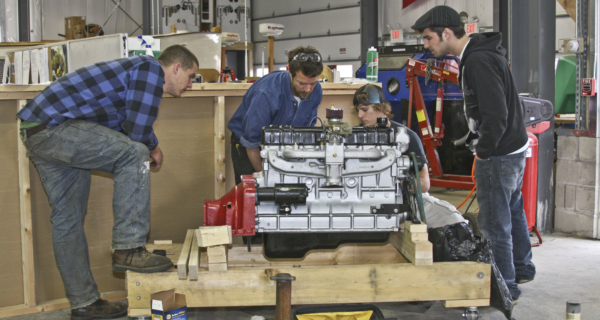Delta ‘T’ Systems play role in historic PT-305 restoration
After a seven-decade odyssey, PT-305 is back home in New Orleans, Louisiana, preparing to serve her country again. Built by Higgins Industries in 1943 for the US Navy, this 78′ patrol torpedo vessel sank three enemy craft in the World War II Mediterranean Theater of Operations. PT-305 is now in the final stages of refurbishment at the National WWII Museum’s John E. Kushner Restoration Pavilion. Engine room ventilation expert Delta “T” Systems plays a role in this historical vessel’s return to service through its donation of 110V fans and DC blowers for PT-305.
PT-305 went by several nicknames, including The Sudden Jerk, The Bar Fly and The Half Hitch. Higgins Industries built nearly 200 PT boats during WWII, though the vast majority were disassembled and disposed of following V-J Day. Designed specifically for combat, these heavily armed wood hull craft engaged German and Japanese armored landing barges. Triple 1,500 bhp Packard 4M 2500 gasoline V-12 engines enabled the powerful yet nimble craft to quickly reach 41 knots.
Restoration of PT-305 has been a multi-year act of love by many volunteers and donors. Stengl estimates more than 52,000 hours have been logged to date by carpenters, engineers, retired military personnel and others passionate about the project. Marine industry companies have stepped forward to help, as well. Delta “T” Systems and its distributor, Donovan Marine, combined to donate the 13 fans and blowers used to optimize airflow on all of the PT-305 ventilation systems.
The Delta “T” equipment will provide supply and exhaust ventilation for forward and aft fuel tank compartments, and port and starboard bilge exhausts for the engine compartment. It will also create exhaust airflow in the galley cooking area and living spaces. Fresh air supply for the A/C generators in the aft storage area also comes through Delta “T” products.
Maintaining historical accuracy while meeting current regulations for ventilation posed a challenge to the project’s engineers. “The fact that Delta ‘T’ fans and blowers were available off the shelf and worked with the original voltage saved us the expense of custom manufacturing,” said Stengl. “Air exchange with the new vent fans meets and exceeds the performance of the original blowers. Delta ‘T’ products are highly reliable and have a proven track record.”
As with the museum’s other WWII artifacts, the emphasis is on authenticity, said Stengl. “Wherever possible, PT-305 will look as it did in 1943, with discreet placement of necessary modern equipment like battery chargers, transformers, extra circuit panels and fire sensors.” Some original combat equipment has been cleverly repurposed, with the ammo boxes supplying seating for guests rather than storing munitions. The boat’s rotating radar dish will now connect to modern weather radar.
The PT-305 project continues to welcome monetary donations and gifts in kind, Stengl said. “Donors can even specify particular parts or systems they wish to furnish.” More information is available at www.nationalww2museum.org/see-hear/collections/artifacts/pt-305.html.
PT-305’s rebirth will undoubtedly stir interest in the pivotal role these high-speed attack boats played during WWII. “This restoration is a tribute and a memorial to the servicemen who fought in these boats, as well as to countless men and women who supported the war effort by working on their construction,” said Stengl. “PT-305 is a national treasure, and we’re proud and honored to have worked on this project.”





Just know you have my moral support. Where will Pt-305 end up for display?